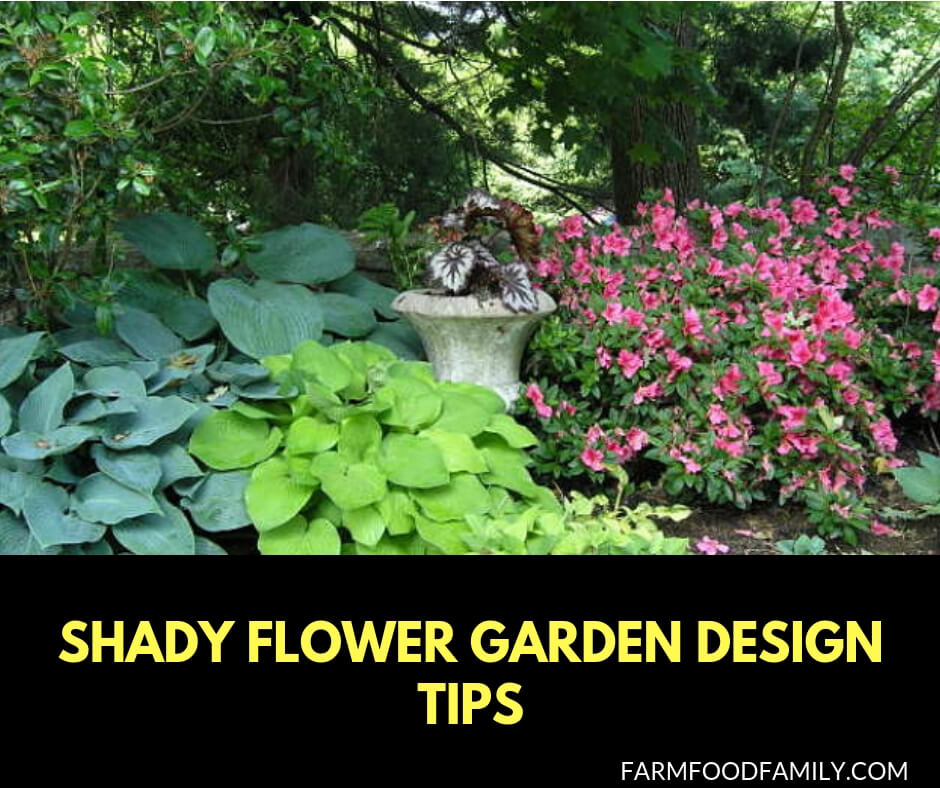Follow these practical design tips and planning advice to plant a flower garden in part or full shade.
Gardeners often face the challenge of designing and planting shaded garden areas, the shade being cast by overhanging trees or perhaps a building. (See Sun or Shade?)
By following these shade garden design tips you will soon be enjoying your own colorful shady flower garden filled with thriving shade loving flowers complemented by ornamental foliage plants and enhanced by appropriate hardscape elements such as paths, benches and suitable focal points.
You will find yourself embraced and surrounded by the mystery and serenity of a cool shady niche, a place of refuge and respite on a hot summer day, a gardener’s soothing haven among the flowers and foliage of shade loving plants. Keep the following points in mind when designing your shade garden:
Plan for a Place to Sit
A shady spot with a garden view is a delightful refuge on a hot summer day. Plan to include a bench or comfortable chair or, in a woodland setting, preserve a convenient tree stump or fallen log to sit on or lean against. This will allow you to enjoy your shade garden at its best.
Include a Path or Walk
Shaded areas tend to be bare of grass; some may have naturally moister soil. So you will need a pathway to help keep your feet clean and dry. For a wooded setting use a natural material such as bark mulch or cobbles collected on site. For a formal setting, use brick or slate. For an informal or cottage garden, use pebbles or stepping stones.
Add a Water Feature

The sound of water livens up a garden, especially a shade garden. The sparkle and flash of water and its cheerful sounds bring energy and movement into the shade.
It could be an elaborate bubbling brook, or a mere burble of water spilling over the lip of an earthenware jug. If there is no electricity, a simple reflecting pool adds mystery and will attract toads and frogs to your shady niche.
Containers as Focal Points
Use containers to emphasize bright shade loving annual flowers closer to eye level and to create colorful focal points in the shady garden.
Select a pot or planter that suits the overall style or mood of your shaded garden. For instance, use a quaint country washtub for a cottage garden, use a large urn for an elegant Victorian garden. (How to Grow Flowers in Pots or Planters)
Encourage Moss, Lichen and Ferns
Damp shade gardens are the perfect environment for growing moss, lichen and ferns. These natural elements may volunteer spontaneously, or you can import them. Be sure to include large rocks and stones as well as fallen tree trunks or limbs to add to the mystique of your shadowy garden.
Use Plants with Interesting or Colorful Foliage
Most perennials bloom for just a short time each year. To increase the season-long interest in your shady garden, plant perennials with attractive foliage.
Look for shade tolerant plants with different textures as well as different colors on their leaves. For example, hostas display bold leaves, ferns have delicate looking leaves, and Liriope is grassy textured. Include variegated plants with white, cream or gold patterns splashed on the leaves to brighten dark areas.
Add Organic Matter to Prepare the Soil
Neglected soil becomes compacted and may be low in organic matter as well as nutrients. Before planting, improve the soil by adding organic matter such as compost and/or old rotten leaves. Test the soil to check the pH and fertility. (Soil Preparation for Planting Flowers.)
Spread Organic Mulch to Feed the Soil
Maintaining a two inch layer of organic mulch year round improves the soil on an ongoing basis when it rots down. Use topdressings of compost as well, for the same reason. Organic mulches you might use include shredded bark, pine fines, leaf mold (well rotted leaves), or chopped autumn leaves.
I hope these shade garden design tips and ideas inspire you to design and create your dream garden in the shade using hardscape such as paths and water features as well as planting colorful shade loving foliage plants and, of course, many shade loving flowers.


